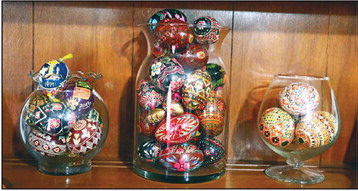Drawing on her Ukrainian roots, Cadott woman creates art to last a lifetime


By Ginna Young
Using a writing tool, beeswax is melted and drawn in a design over the surface of the egg.
Multiple dyes are layered atop the other, while the desi...
